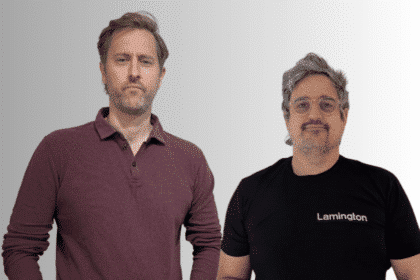Today’s Hipsters are breaking out the vinyl, shaking their polaroid pictures and reviving ’70s fashion trends like paisley.
So who can blame brands for wanting to cash in on a fondness for days gone by?
Technology brand TEAC is in the throes of a “Vinyl Revival”, eyewear brand Specsavers has a selection of retro inspired glasses and fashion labels are pumping out yesteryear inspired cuts and fabrics. Fujifilm also has a range of instant cameras that imitate the Polaroid to make “hipster snaps even easier than ever”.
Taking a stroll back in time is nothing new, however in the current global climate with technology’s rapid boom, population growth and climate change, Sam Mackisack, digital director at Clemenger BBDO Melbourne, says brands need to step up and start looking forward, not back.
“We’re staring down the barrel of a pretty terrifying future in a lot of ways,” he says. “It’s time for brands to start stepping up and providing some guidance about how we can get there and make it work, rather than going ‘don’t worry, listen to your records and take photos on your Polaroid camera and dream it’s still 1978’.”
Still, the attraction of ‘going retro’ is evident in many ways. Hitting two generations with one stone is a marketers dream and tapping into the iconography of a time gone by that appeals to the cool kids of today has the power to do just that. Westfield attempted to do this in its recent campaign which featured the classic Duran Duran track Hungry like the Wolf.
Tracy Baker, director of Sydney-based communications agency Baker Brand, says: “People that are in their 30s or 40s experienced that song the first time around, and so when they hear it they have a good memory of it. With the younger generation, they’re discovering it for the first time. Retro has that multigenerational appeal.”
However Mackisack says marketers trying to tap into this vintage feel are copping out.
He says: “It’s a safe, easy move. I’d love to see brands point more to the future again. Leadership has to come from somewhere and someone has to be pointing to the future.”
It’s kind of a bullshit version of the past anyway. I’m sure the people in 1978 would have told you it was a horrible time.
“We’ve always been in the habit of looking back and idealising the past. People are quite confused about the present at the moment and definitely fearful of the future. The natural retreat is to go back to the safety of the past and try to escape.”
Mackisack points out that one of advertising’s golden ages, the 1950s, was all about looking to the future.
“It was all about saying ‘you can have the Jetsons’ kitchen in your house’ and about painting this vision for this bright, exciting future.”
Objects and brands that are subject to creativity are the most susceptible to this retro trend, according to Mackisack, such as the typewriter app actor Tom Hanks recently introduced, an iPad app that simulations what it was like to plonk away on the 19th century machine.

“There’s old music, polarised cameras, vintage filters on Instagram, there’s this ridiculous typewriter app Tom Hanks has made. All of them, we’re trying to create an idealised version of life, which is nostalgia for an age that never really existed.
“We’re a bit lost at the moment about what the future looks like. So we end up in this loop going back to old ideas and refreshing and recycling them in new ways,” says Mackisack.
However, not all brands are nosing around in the past. Some such as Apple and Google are firmly planted in the present, and maybe even taking a peek at what the future holds.
Mackisack says: “An interesting example is restaurant chain Chipotle in the States. They are looking toward the future and they are looking to find a better way of doing things, but even then, its answer is still literally, take it back to the start, let’s go back to how farming used to be.
“Apple is really about the now and connecting with the now. Even Google, it uses the words ‘Google Now’ in its products.”
Google’s work at trying to create a more connected future through its Project Loon, a balloon powered internet, is one such example of a future-vision, says Mackisack.
“Closer to home, the Australia Post Video Stamp was a great example of finding a place in the future for an old product.”
However, he adds: “I don’t think there are many brands out there who are doing it well at the moment.”
















